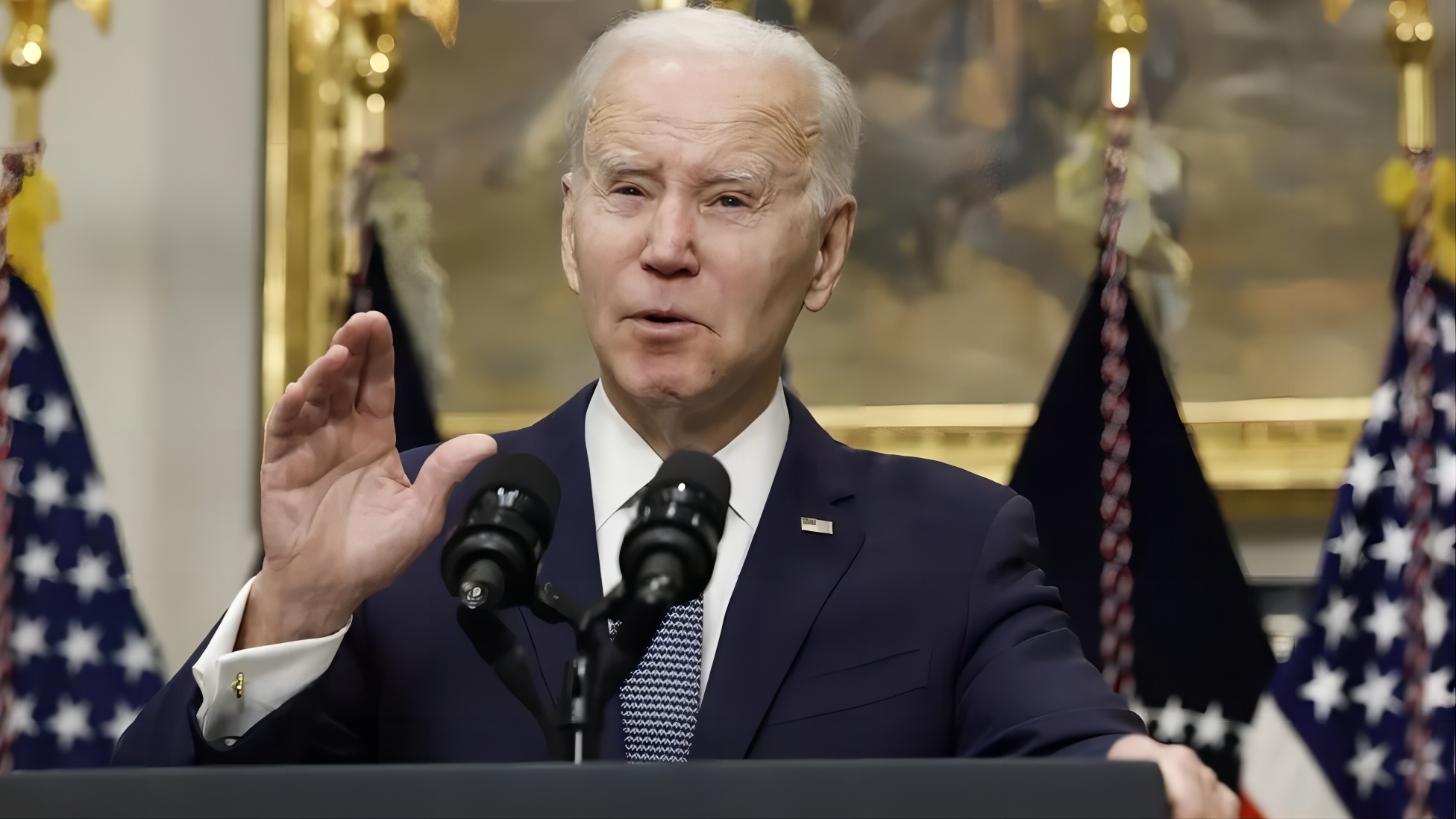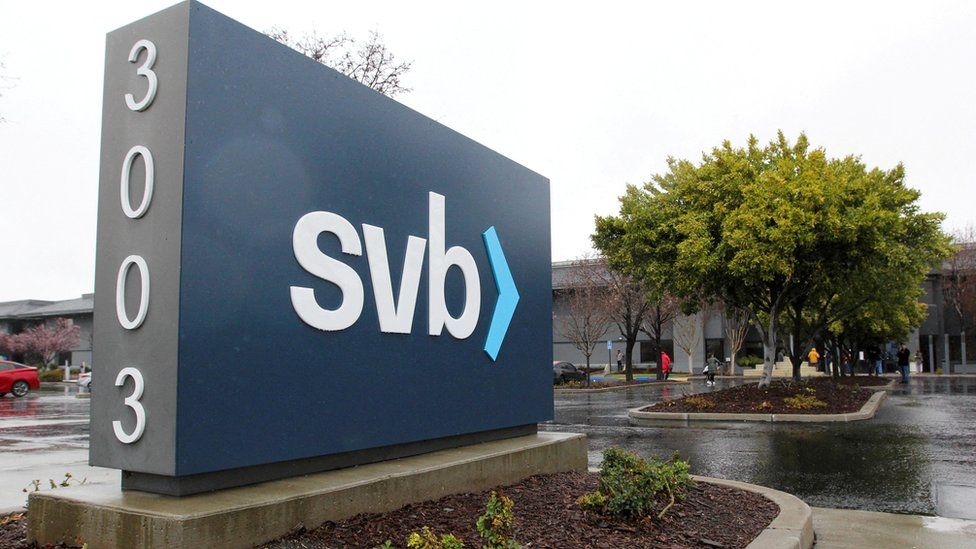
It comes after authorities had to step in to protect customer deposits when the US lenders Silicon Valley Bank (SVB) and Signature Bank collapsed.
Joe Biden promised to do “whatever is needed” to protect the banking system.
But investors fear other lenders may still be hit by the fallout, sparking sharp falls in share prices globally.
Earlier on Monday, Spain’s Santander and Germany’s Commerzbank saw their share prices dive by more than 10% at one point.
A string of smaller US banks suffered even worse losses than European counterparts on Monday, despite reassuring customers that they had more than enough liquidity to protect themselves from shocks.
The volatility has led to speculation that America’s Federal Reserve will now pause its plans to keep raising interest rates, designed to tame inflation.
Mr Biden said that people and businesses that had deposited money with Silicon Valley Bank would be able to access all their cash from Monday, after the government stepped in to protect their deposits in full.
Many business customers had faced the prospect of not being able to pay staff and suppliers after their funds were frozen.
BBC North America Technology correspondent James Clayton spoke to people queuing up all day outside the SVB branch in Menlo Park, California, to access their funds.
As the bank was no longer offering wire transfers, they were taking out their money in cashier cheques.
How did Silicon Valley Bank collapse?
Silicon Valley Bank – which specialised in lending to technology companies – was shut down by US regulators who seized its assets on Friday. It was the biggest failure of a US bank since the financial crisis in 2008.
It had been trying to raise money to plug a loss from the sale of assets affected by higher interest rates. Word of the troubles led customers to race to withdraw funds, leading to a cash crisis.
Authorities on Sunday also took over Signature Bank in New York, which had many clients involved in crypto and was seen as the institution most vulnerable to a similar bank run.

Mr Biden promised that covering the deposits would not cost taxpayers anything, and instead be funded by fees regulators charge to banks.
As part of efforts to restore confidence, US regulators also unveiled a new way for banks to borrow emergency funds in a crisis.
Yet there is concern that the failures, which came after the collapse of another US lender, Silvergate Bank, last week, are a sign of troubles at other firms.
Paul Ashworth of Capital Economics said the US authorities had “acted aggressively to prevent a contagion developing”.
“But contagion has always been more about irrational fear, so we would stress that there is no guarantee this will work,” he added.
Danni Hewson, head of financial analysis at the stockbrokers AJ Bell, said: “The first rush of relief has been replaced by niggling concerns that the era of high rates might be more difficult for some banks to stomach than had been previously thought.
“In the US, bank stocks slid despite Joe Biden’s pledge that ‘whatever is needed’ will be carried out to prevent more dominos from tumbling.”
Political fallout
The failure of SVB has re-ignited debates – similar to those seen following the 2008 financial crisis – about how much the government should do to regulate and protect banks.
The chair of the US Federal Reserve, Jerome Powell, says there will be a thorough and transparent review of the collapse.
Mr Biden called for tougher rules and emphasised that investors and bank leaders would not be spared.
“They knowingly took a risk… that’s how capitalism works,” he said.
Still, Republican Senator Tim Scott, seen as a potential presidential candidate in 2024, called the rescue “problematic”.
“Building a culture of government intervention does nothing to stop future institutions from relying on the government to swoop in after taking excessive risks,” he said.

Once again people are worried about banks. Once again there is intense debate about bailouts. But this isn’t 2008.
Following the global financial crisis, the focus was on reforming banks considered “too big to fail”. Today’s problems are centred around medium- and smaller-sized banks.
Both of the banks that collapsed – Silicon Valley Bank and Signature Bank – had the same thing in common: their business models were too concentrated in one sector and they were over exposed to assets whose values came under pressure from rising interest rates.
The criticism is that they should have foreseen this and they didn’t. US Federal Reserve chair Jerome Powell has gone to great lengths to signal the Fed’s intention to raise interest rates.
Since most banks are well diversified and have plenty of cash on hand, the assumption is that the risk to the rest of the banking sector is low. That won’t stop regulators looking into what went wrong and what rules need to change.
And the pressure on small- and medium-sized banks hasn’t gone away. What happens to the US economy and the fight against inflation also remains to be seen.